Oxytetracycline
Synonym(s):OTC;Oxytetracycline dihydrate
- CAS NO.:79-57-2
- Empirical Formula: C22H24N2O9
- Molecular Weight: 460.43
- MDL number: MFCD00003700
- EINECS: 201-212-8
- SAFETY DATA SHEET (SDS)
- Update Date: 2025-01-27 09:38:02

What is Oxytetracycline?
Absorption
Readily absorbed following oral administration.
Toxicity
Adverse effects may include stomach or bowel upsets and rarely allergic reactions. Very rarely severe headache and vision problems may be signs of dangerous intracranial hypertenion.
Description
Oxytetracycline also is one of the classic tetracyclines. It is produced by fermentation of Streptomyces rimosis and other soil microorganisms. The most hydrophilic tetracycline on the market, it has largely now been replaced by its semisynthetic descendants. It is primarily used today for IM injections.
Chemical properties
beige to light yellow crystalline powder
Originator
Terramycin,Pfizer,US,1950
The Uses of Oxytetracycline
Oxytetracycline(Terramycin) was the second of the broad-spectrum tetracycline group of antibiotics to be discovered. Oxytetracycline works by interfering with the ability of bacteria to produce proteins that are essential to them. Without these proteins t
The Uses of Oxytetracycline
Oxytetracycline (terramycin) is a linear, tetracyclic broad spectrum antibiotic originally isolated from Streptomyces rimosus in 1949. Like all tetracyclines, oxytetracycline shows broad spectrum antibacterial and antiprotozoan activity and acts by binding to the 30S and 50S ribosomal sub-units, blocking protein synthesis. Oxytetracycline, although less coloured than other tetracyclines, is still a pigment and is thus sensitive to environmental and storage conditions. Commercial oxytetracycline may contain significant levels of degradation products.
The Uses of Oxytetracycline
Oxytetracycline, which has seen significant usage in plant disease control, does not contain the Cl atom but has an additional -OH group at the C5 position on the tetracycline molecule (4). Tetracyclines are widely used therapeutic agents in clinical medicine [second to penicillins in total tons used each year (5)] for bacterial respiratory, periodontal, and urogenital tract diseases (6). Oxytetracycline is also used as a feed amendment for growth promotion and as a therapeutic agent for curing diseases of agricultural animals including fish.
Background
A tetracycline analog isolated from the actinomycete streptomyces rimosus and used in a wide variety of clinical conditions.
Indications
Oxytetracycline is indicated for treatment of infections caused by a variety of Gram positive and Gram negative microorganisms including Mycoplasma pneumoniae, Pasteurella pestis, Escherichia coli, Haemophilus influenzae (respiratory infections), and Diplococcus pneumoniae.
What are the applications of Application
Oxytetracycline is an antibiotic that impairs mitochondrial protein synthesis
Definition
ChEBI: A tetracycline used for treatment of infections caused by a variety of Gram positive and Gram negative microorganisms including Mycoplasma pneumoniae, Pasteurella pestis, Escherichia coli, Haemophilus influenzae /ital> (respiratory infections), and Diplococcus pneumoniae.
Manufacturing Process
The pH was adjusted to 7.0 with sodium hydroxide and calcium carbonate was added at the rate of 1 g/l.
500 ml portions of the above medium were added to Fernbach flasks which
were then sterilized at 121°C for 30 minutes. Upon cooling, the flasks were inoculated with a suspension of the growth of s. rimosus obtained from the surface of beef lactose agar slants, and the flasks were shaken for 4 days at 28°C on a rotary shaker having a displacement of 2" at an rpm of 200. At the end of this period the broth was found to contain 640 C.D.U/ml and 400 chloramphenicol units/ml. The mycelium was separated from the broth by filtration and the latter was adjusted to pH 9.0. The antibiotic was extracted from the broth with n-butanol, and when the ultraviolet absorption spectrum was observed on the butanol solution of the antibiotic, peaks in the absorption curve were found at 385 and 270 millimicrons.
brand name
Terramycin (Pfizer).
Therapeutic Function
Antibiotic
Antimicrobial activity
It is slightly less active than other tetracyclines against most common pathogenic bacteria.
Pharmaceutical Applications
A fermentation product of certain strains of Streptomyces rimosus, supplied as the dihydrate or hydrochloride for oral or parenteral administration.
Pharmacokinetics
Oxytetracycline is known as a broad-spectrum antibiotic due to its activity against such a wide range of infections. It was the second of the tetracyclines to be discovered. Oxytetracycline, like other tetracyclines, is used to treat many infections common and rare. Its better absorption profile makes it preferable to tetracycline for moderately severe acne, but alternatives sould be sought if no improvement occurs by 3 months.
Pharmacokinetics
Oral absorption: c.60%
Cmax 500 mg oral: 3–4 mg/L after 2–4 h
Plasma half-life: c.9 h
Volume of distribution: c.1.8 L/kg
Plasma protein binding: 20–35%
Oxytetracycline is moderately well absorbed from the upper
gastrointestinal tract. Food decreases plasma levels by approximately
50%. Although widely distributed in the tissues, it achieves lower concentrations than related agents such as minocycline.
Sputum concentrations of 1 mg/L have been recorded
on a daily dosage of 2 g. Approximately 60% is excreted in the
urine and the half-life is prolonged in renal insufficiency.
Clinical Use
It offers no unique therapeutic advantages, although it is one of the cheaper preparations.
Side Effects
Gastrointestinal intolerance is responsible for most side effects, and tends to be more severe than with other tetracyclines. Esophageal irritation may result from the local effects of the swallowed drug. Potentially serious adverse reactions have included neuromuscular paralysis following intravenous administration to patients with myasthenia gravis. Thrombocytopenic purpura and lupus erythematosus syndrome have been reported, although a direct role for the drug in the latter remains uncertain. Apart from the effect on nitrogen balance common to many tetracyclines, a metabolic effect on glucose homeostasis has been noted in type 1 diabetes mellitus. Allergic contact sensitivity reactions have also been reported.
Synthesis
Oxytetracycline, 4-dimethylamino-1,4,4a,5,5a,6,11,12a-octahydro- 3,6,10,12,12a-hexahydroxy-6-methyl-1,11-dioxo-2-naphthacencarboxamide (32.3.2), is synthesized biosynthetically as a result of the activity of actinomycete S. rimosus.
Veterinary Drugs and Treatments
Oxytetracycline products are approved for use in dogs and cats (no known products are being marketed, however), calves, non-lactating dairy cattle, beef cattle, swine, fish, and poultry. For more information, refer to the Doses section, below.
Drug interactions
Potentially hazardous interactions with other drugs
Anticoagulants: possibly enhanced anticoagulant
effect of coumarins and phenindione.
Oestrogens: possibly reduced contraceptive effects of
oestrogens (risk probably small).
Retinoids: possible increased risk of benign
intracranial hypertension with tetracyclines and
retinoids - avoid.
Metabolism
Not Available
Metabolism
Metabolism is negligible. The tetracyclines are excreted in the urine and in the faeces. Renal clearance is by glomerular filtration. Up to 60% of an intravenous dose of tetracycline, and up to 55% of an oral dose, is eliminated unchanged in the urine. The tetracyclines are excreted in the bile, where concentrations 5-25 times those in plasma can occur. There is some enterohepatic reabsorption and considerable quantities occur in the faeces after oral doses.
Purification Methods
Terramycin crystallises (as dihydrate) from water or aqueous EtOH and is soluble in MeOH, EtOH, Me2CO and H2O (0.25mg/mL at 25o ) but insoluble in Et2O and pet ether. It is amphoteric, and an aqueous solution has pH 2.0-5.0. It has max at 247, 275 and 353nm in 0.1 M phosphate (pH 4.5). [Finlay et al. Science 111 85 1951.] The hydrochloride, [2058-46-0] M 496.9 [Beilstein 14 IV 2630], crystallises from MeOH in needles and from H2O at 50o it forms plates. Terramycin has also been purified via the hydrochloride by dissolving it in H2O, adjusting to pH 6, and the solid is filtered off after 1hour. The crystals of the dihydrate are dried to constant weight in vacuum/CaCl2/25o. Drying at 60o in vacuo gives the anhydrous base m 184.5-185.5o (sintering at 180o). The dihydrate has m 181-182o. Its optical rotation in MeOH decreases from [] D 25 +26o (c 0.5%) to [] D 25 +11.3o after standing for 16hours. It forms a sodium salt and a CaCl2 complex. [Regna et al. J Am Chem Soc 73 4211 1951, Beilstein 14 IV 2633.]
Toxicity evaluation
Tetracycline is a potent inhibitor of bacterial protein biosynthesis, with less activity on mammalian cells. It binds to the 30S and 50S bacterial ribosomal subunits, and it inhibits the binding of aminoacyl–tRNA and the termination factors RF1 and RF2 to the A site of bacterial ribosomes (21). Acute oral LD50 for mice >7 g/kg; for rats >10 g/kg, acute intravenous 100 ~ 200 mg/kg. Tlm for black bass: 250 ppm (24 h).
Properties of Oxytetracycline
| Melting point: | 183 °C |
| Boiling point: | 565.29°C (rough estimate) |
| alpha | -223 º (c=1 0.03N HCl) |
| Density | 1.6340 |
| refractive index | 1.6500 (estimate) |
| storage temp. | Keep in dark place,Inert atmosphere,Room temperature |
| solubility | Sparingly soluble in aqueous solution at 0.6 mg/mL |
| form | Crystalline Powder |
| pka | pKa 3.27/7.32/9.11(H2O,t =25,I<0.01)(Approximate) |
| color | Beige to light yellow |
| Water Solubility | 0.2 g/L |
| CAS DataBase Reference | 79-57-2(CAS DataBase Reference) |
| EPA Substance Registry System | Oxytetracycline (79-57-2) |
Safety information for Oxytetracycline
| Signal word | Warning |
| Pictogram(s) |
 Health Hazard GHS08  Environment GHS09 |
| GHS Hazard Statements |
H411:Hazardous to the aquatic environment, long-term hazard |
| Precautionary Statement Codes |
P201:Obtain special instructions before use. P202:Do not handle until all safety precautions have been read and understood. P273:Avoid release to the environment. P280:Wear protective gloves/protective clothing/eye protection/face protection. P391:Collect spillage. Hazardous to the aquatic environment P308+P313:IF exposed or concerned: Get medical advice/attention. |
Computed Descriptors for Oxytetracycline
| InChIKey | IWVCMVBTMGNXQD-PXOLEDIWSA-N |
Oxytetracycline manufacturer
Molsyns Research
Allmpus Laboratories Pvt Ltd
New Products
Methyl (R)-1-Boc-4,4-difluoropyrrolidine-2-carboxylate 2,2-Difluoropropylamine hydrochloride tert-butyl 3-bromoazetidine-1-carboxylate (R)-1-Boc-3-hydroxypyrrolidine DIFLUOROACETIC ANHYDRIDE 2,2-Difluoropropionic acid Diallylamine, 99% Calcium hydroxide, 95% Aluminum oxide, basic 2-Bromophenylacetonitrile, 97% L-tert-Leucine,97% N-Hydroxy-2-methylpropanimidamide 4-(3,4-Dichlorophenyl)-3,4-Dihydro-N-Methyl-1-(2H)-Naphthalenimine (Schiff Base) 2-AMINO-3,5-DIBROMO BENZALDEHYDE [ADBA] L-Glutamic Acid Dimethyl Ester Hcl 10-Methoxy-5H-dibenz[b,f]azepine 5-Cyanophthalide N, N-Carbonyldiimidazole (CDI) Dibenzoyl Peroxide Titanium Dioxide 2-(Methylthio) Benzonitrile Sodium Acetate Anhydrous Allopurinol 1,5-DibromopentaneRelated products of tetrahydrofuran


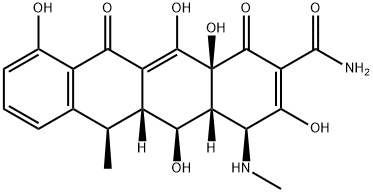
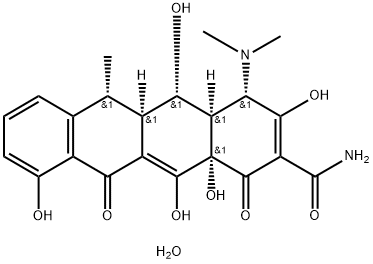
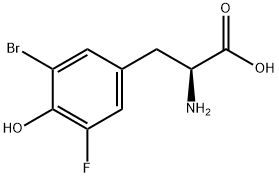
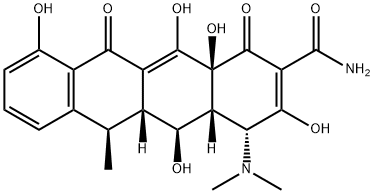

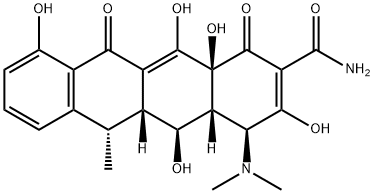
You may like
-
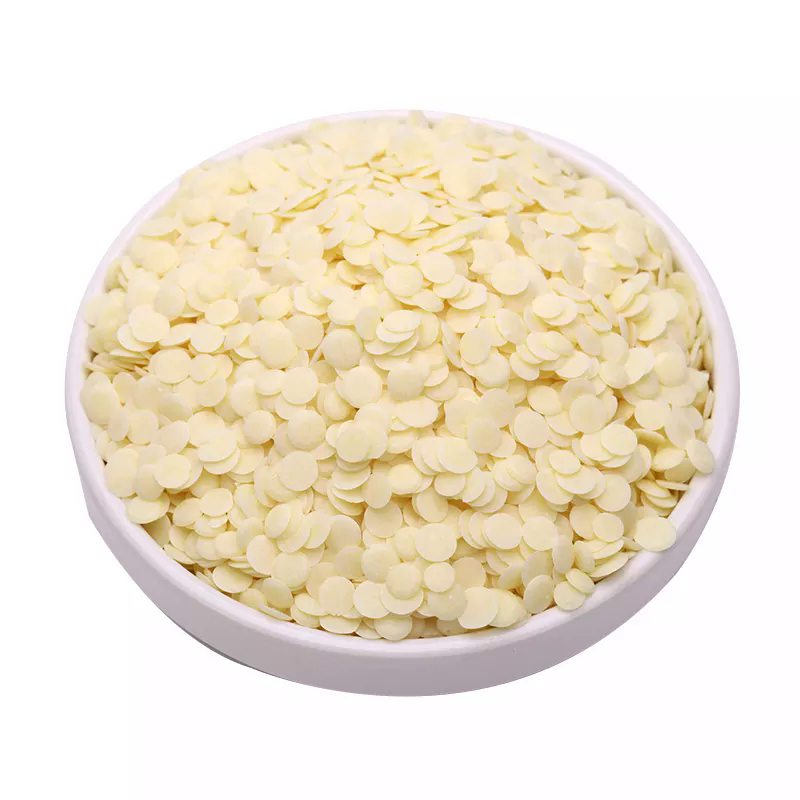 79-57-2 99%View Details
79-57-2 99%View Details
79-57-2 -
 79-57-2 Oxytetracycline 98%View Details
79-57-2 Oxytetracycline 98%View Details
79-57-2 -
 DOXYCYCLINE EP IMPURITY E 79-57-2 96.58View Details
DOXYCYCLINE EP IMPURITY E 79-57-2 96.58View Details
79-57-2 -
 Oxytetracycline 98.00% CAS 79-57-2View Details
Oxytetracycline 98.00% CAS 79-57-2View Details
79-57-2 -
 Oxytetracycline CAS 79-57-2View Details
Oxytetracycline CAS 79-57-2View Details
79-57-2 -
 Oxytetra Selective Supplement CAS 79-57-2View Details
Oxytetra Selective Supplement CAS 79-57-2View Details
79-57-2 -
 Ethyl-2-Chloroacetoacetate 609-15-4View Details
Ethyl-2-Chloroacetoacetate 609-15-4View Details
609-15-4 -
 609-15-4View Details
609-15-4View Details
609-15-4
